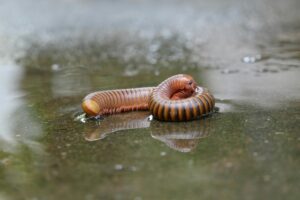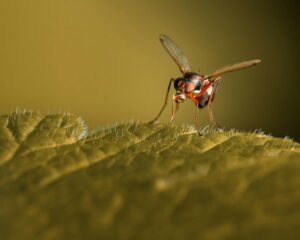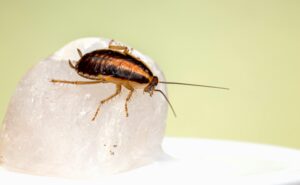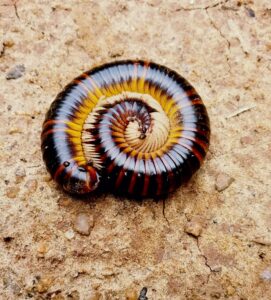NEET PYQ Chapterwise – Animal Kingdom
In this article we are going to solve NEET PYQ Chapterwise – Animal Kingdom Topic
NEET PYQ Chapterwise – Animal Kingdom
We can expect 2 -3 question from the Animal kingdom in the Neet exam
1) The animals with Bilateral Symmetry in young stage and Radial Symmetry in the adult stage belongs to the Phylum ……..( 2004 )
a) Annelida
b) Mollusca
c) Cnidaria
d) Echinodermata
Solution – The animals with Bilateral Symmetry in young stage and Radial Symmetry in the adult stage belongs the Phylum Echinodermata
These animals have Endoskeleton of Calcareous Ossicles
the adult echinoderms are radially symmetrical but the larvae are bilaterally symmetrical
ex – Asterias ( star fish) , Echinus ( Sea urchin)

2) Which one of the following groups of animals is bilaterally symmetrical and triploblastic ( NEET 2009)
a) Aschelminthes ( Roundworm)
b) Ctenophores
c) Sponges
d) Coelenterates ( Cnidaria )
Solution- The Aschelminthes are animals which are bilaterally symmetrical and are triploblastic
The body of these animals is circular in Cross – Section , hence are kn0wn as Roundworms
3) Which of the following animals have scattered cells with cell- tissue grade Organisation ? ( NEET -2000 )
a) Sponge
b) Hydra
c) liver fluke
d) Ascaris
Solution- Hydra have scattered cells with cell- tissue grade whereas
Sponge – Sponge has cellular level of Organisation
Liver fluke – Liver fluke has organ level of Organisation
Ascaris – Ascaris has organ system level of Organisation
4) Coelom is found between ( NEET – 1996)
a) body wall and ectoderm
b) ectoderm and endoderm
c) mesoderm and body wall
d) mesoderm and ectoderm
Solution- Coelom is found between mesoderm and body wall
Animals possessing coelom are known as Coelomates
5) Which one of the following animal shows the phenomenon of Metamerism
a) Sycon
b) Spongilla
c) Earthworm
d) None of the above
Solution- Earthworm body shows the phenomenon of Metamerism
What is Metamerism – In some animals body is divided ( externally and internally ) into segments with a serial repetition of at least some organs this pattern is known as Metameric pattern and the phenomenon is known as Metamerism
https://en.wikipedia.org/wiki/Metamerism_(biology)

6) Which on of the following animal show the property of Bioluminescence
a) Taenia
b) Fasciola
c) Locusta
d) Pleurobrachia
Solution – Pleurobrachia shows the property of Bioluminescence
What is Bioluminescence – it is the property of a living organism to Emit light
https://en.wikipedia.org/wiki/Pleurobrachia
7) Which one of the following Vectors belongs to Phylum Arthropoda
a) Anopheles
b) Culex
c) Aedes
d) All of the above
Solution – All of the above mentioned vectors belongs to phylum Arthropoda

8) Planaria possesses high capacity of
a) Metamorphosis
b) Regeneration
c) Alteration of generation
d) Bioluminescence
Solution – Planaria possess high capacity of Regeneration
Microbes in Human Welfare NCERT 12 NEET PYQ
9) Which of the following features is not present in the Phylum Arthropoda
a) Parapodia
b) Jointed appendages
c) Chitinous exoskeleton
d) Metameric segmentation
Solution – Parapodia is the feature which is not present in phylum Arthropoda

https://biosimplified.com/enhancement-in-food-production-neet-12pyq/
10) In Arthropoda, head and thorax are often used to form cephalothorax, but in which one of the following classes, is the body divided into head thorax and abdomen ?
a) Insecta
b) Myriapoda
c) Crustacea
d) Arachnida and crustacea
Solution – Insecta
Phylum Arthropoda is divided into 4 Classes
1) Crustacea
2) Myriapoda
3) Insecta
4) Arachnida
1) Crustacea – in these animals Head and Thorax are Fused
these animals possess many legs
their habitat is mainly in water
ex – Shrimps, Crab

2) Myriapoda –
These organisms body is divided into many parts ( segments)
Ex – Centipede, Millipede

3) Insecta –
Body of these organism is divided into 3 regions –
1) Head
2) Thorax
3) Abdomen
they have 3 pairs of legs which are jointed
they also posses antennae in pair
Ex- Ant , Butterfly

4) Arachnida –
Head and Thorax is fused in these organism
Ex – Spider, Scorpion
11) Malpighian tubule are
a) Excretory organs of insects
b) Excretory organs of Annelids
c) Respiratory organs of insects
d) Respiratory organs of Annelids
Solution – Malpighian tubules are Excretory organ of Insects
